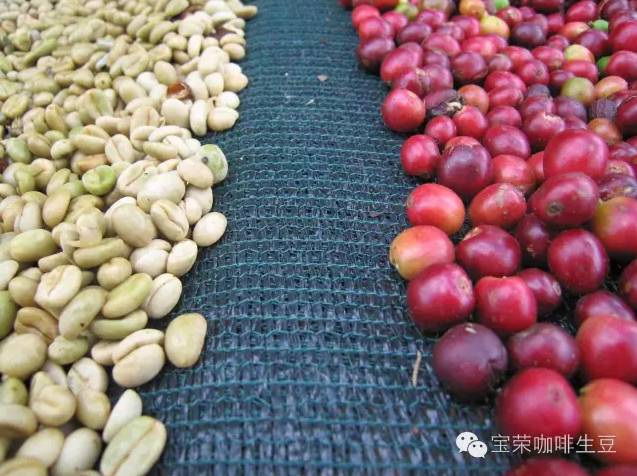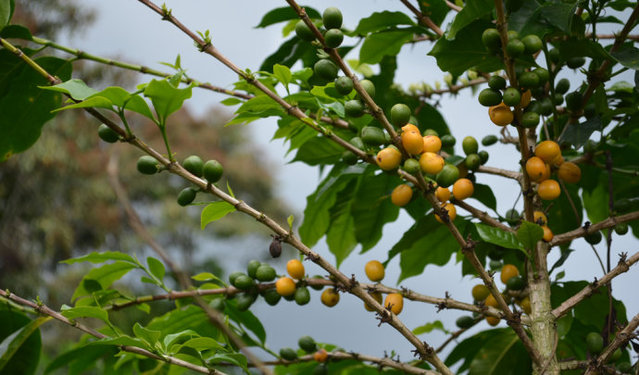Two basic planting patterns of Colombian Coffee Fine Coffee with Colombian Flavor

After the news of Napoleon I's invasion of Spain in 1808 spread to Colombia, the people of that place immediately launched an independence movement. On July 20, 1810, a large-scale uprising against Spanish colonial rule broke out in Bogota and the Governor of New Granada was arrested. In November 1811, representatives from all over the world organized Congress in Bogota, established the New Granada Joint Provincial Government, and declared independence on November 11. But Kundinamaka did not recognize the federation. At the end of 1812, the debate over the formation of a regime eventually led to civil war. It broke out again in 1814. In mid-1815, a large Spanish expedition arrived in New Grenada. Overthrew the United provincial government. In May 16, royalists took control of the whole of New Grenada. Spanish colonists made a comeback in 1815. On August 7, 1819, S. Bolivar led the insurgents to defeat the Spanish colonial army at the Battle of Boyaca and conquered Bogota on the 10th, ending Spanish colonial rule.
The history of coffee cultivation in Colombia can be traced back to the Spanish colonial era in the 16th century, and there are many theories about the history of coffee in Colombia:
One: it is said to come from the sea island of the Caribbean and from El Salvador in Central America.
Second: in 1808, a priest introduced coffee beans to Colombia for the first time from the French Antilles via Venezuela. One of them is that Colombia's first coffee seeds were imported from Venezuela through the province of Santander. [1]
Third: the earliest records of coffee cultivation in Colombia appear in the book "The Illustrated Orinoca" written by Jose Gumilla, a Spanish missionary. He describes what he saw when he preached on both sides of the Meta River in 1730, in which he mentioned the local coffee plantation. By 1787, other missionaries had spread coffee to other parts of Colombia.
Colombia, located in the northwest of South America, is a beautiful country with a long history. Indians have lived on this land since ancient times. It was colonized by Spain in 1531 and gained independence in 1819. It was renamed in 1886 to commemorate Columbus, the discoverer of the American continent. Colombia has beautiful mountains and rivers, beautiful scenery, pleasant climate, spring all year round and fresh air. Colombia is rich in products, especially coffee, flowers, gold and emeralds are known as the "four treasures". Today, the country is the second largest coffee producer after Brazil, the world's largest exporter of Arabica coffee beans and the world's largest exporter of washed coffee beans. Colombian coffee is often described as silky and smooth. Of all the coffees, it is the most balanced, soft, smooth and ready to drink, and it has won praise that no other coffee can match: known as "green gold".
Important Notice :
前街咖啡 FrontStreet Coffee has moved to new addredd:
FrontStreet Coffee Address: 315,Donghua East Road,GuangZhou
Tel:020 38364473
- Prev

German Coffee Culture Melitta Bentz Coffee filter German Coffee
Speaking of the German festival, we will never miss the grand Munich Oktoberfest, while the German coffee festival is little known. On September 29th, 2006, the German Coffee Association in Hamburg initiated and established the Coffee Festival (Tag des Kaffees) and organized a design competition to select the Logo of the Coffee Festival. Teresa Habild, a 26-year-old female college student, won the championship for her simple and elegant design.
- Next

The main varieties of Colombian coffee are Rabe coffee, small grain coffee, American coffee flavor.
The earliest records of coffee cultivation in Colombia appear in a book called The Illustrated Orinoca by Spanish missionary Jose Gumilla. He describes what he saw when he preached on both sides of the Meta River in 1730, in which he mentioned the local coffee plantation. By 1787, other missionaries had spread coffee to other parts of Colombia.
Related
- Beginners will see the "Coffee pull flower" guide!
- What is the difference between ice blog purified milk and ordinary milk coffee?
- Why is the Philippines the largest producer of crops in Liberia?
- For coffee extraction, should the fine powder be retained?
- How does extracted espresso fill pressed powder? How much strength does it take to press the powder?
- How to make jasmine cold extract coffee? Is the jasmine + latte good?
- Will this little toy really make the coffee taste better? How does Lily Drip affect coffee extraction?
- Will the action of slapping the filter cup also affect coffee extraction?
- What's the difference between powder-to-water ratio and powder-to-liquid ratio?
- What is the Ethiopian local species? What does it have to do with Heirloom native species?

